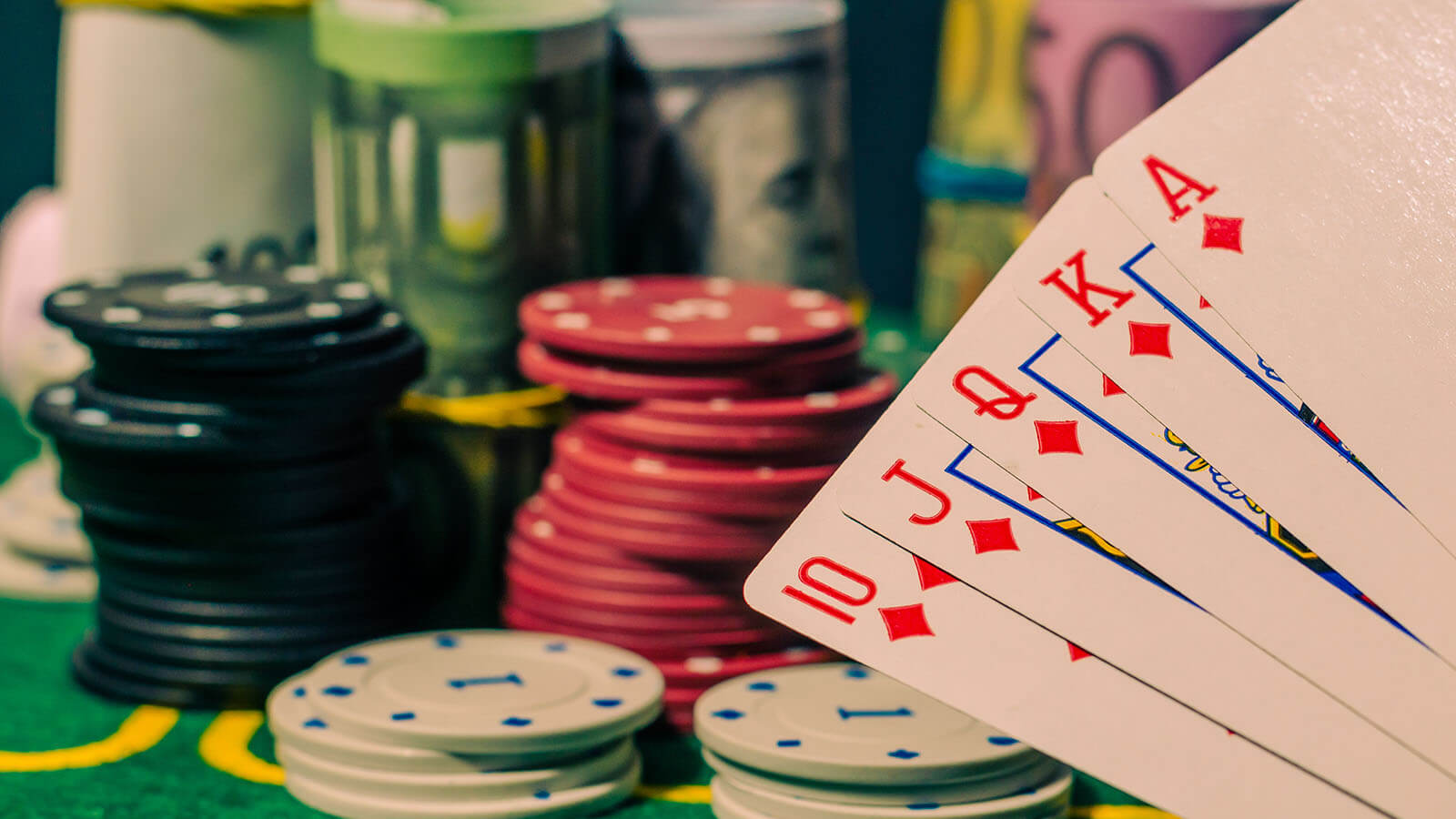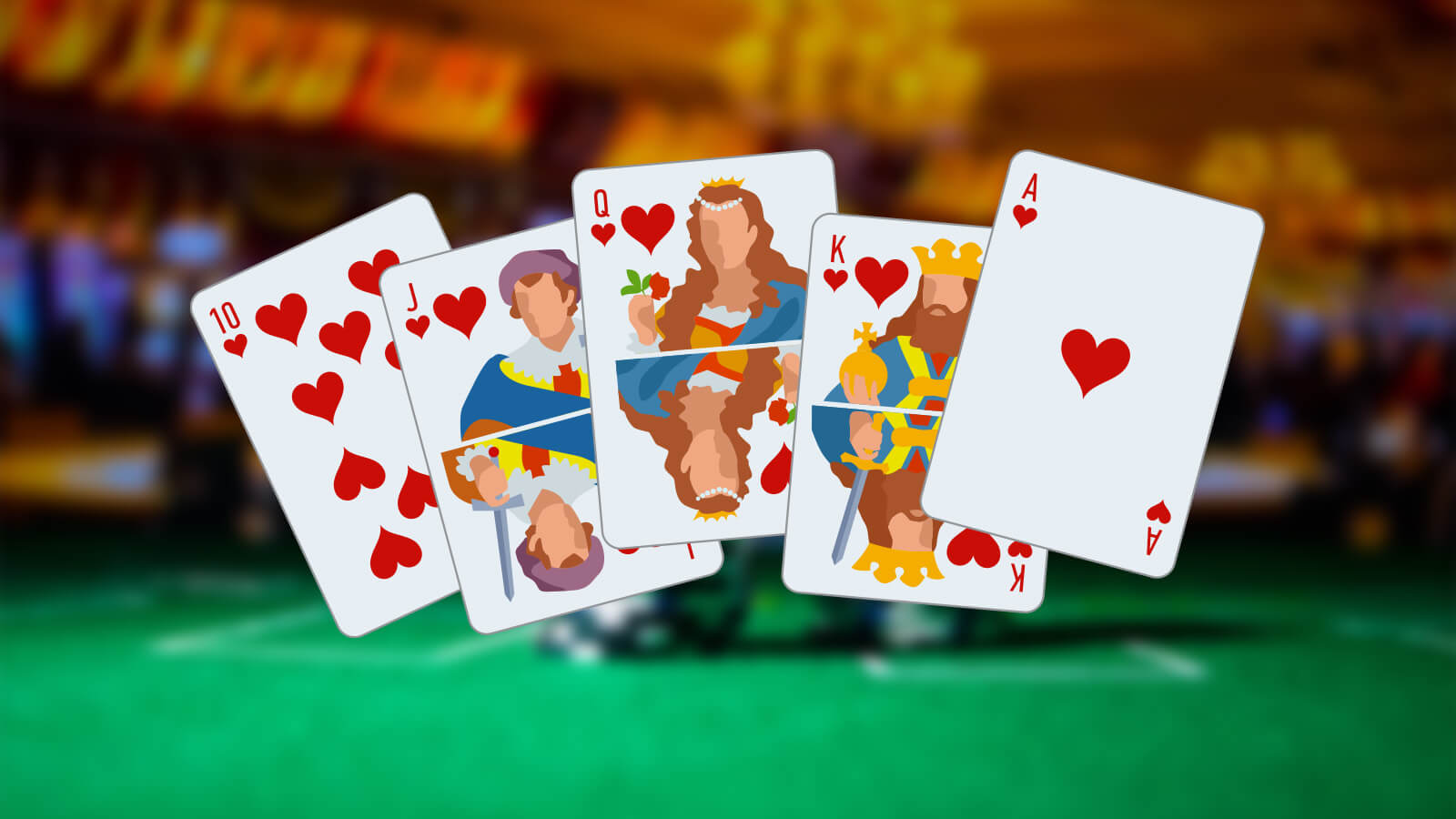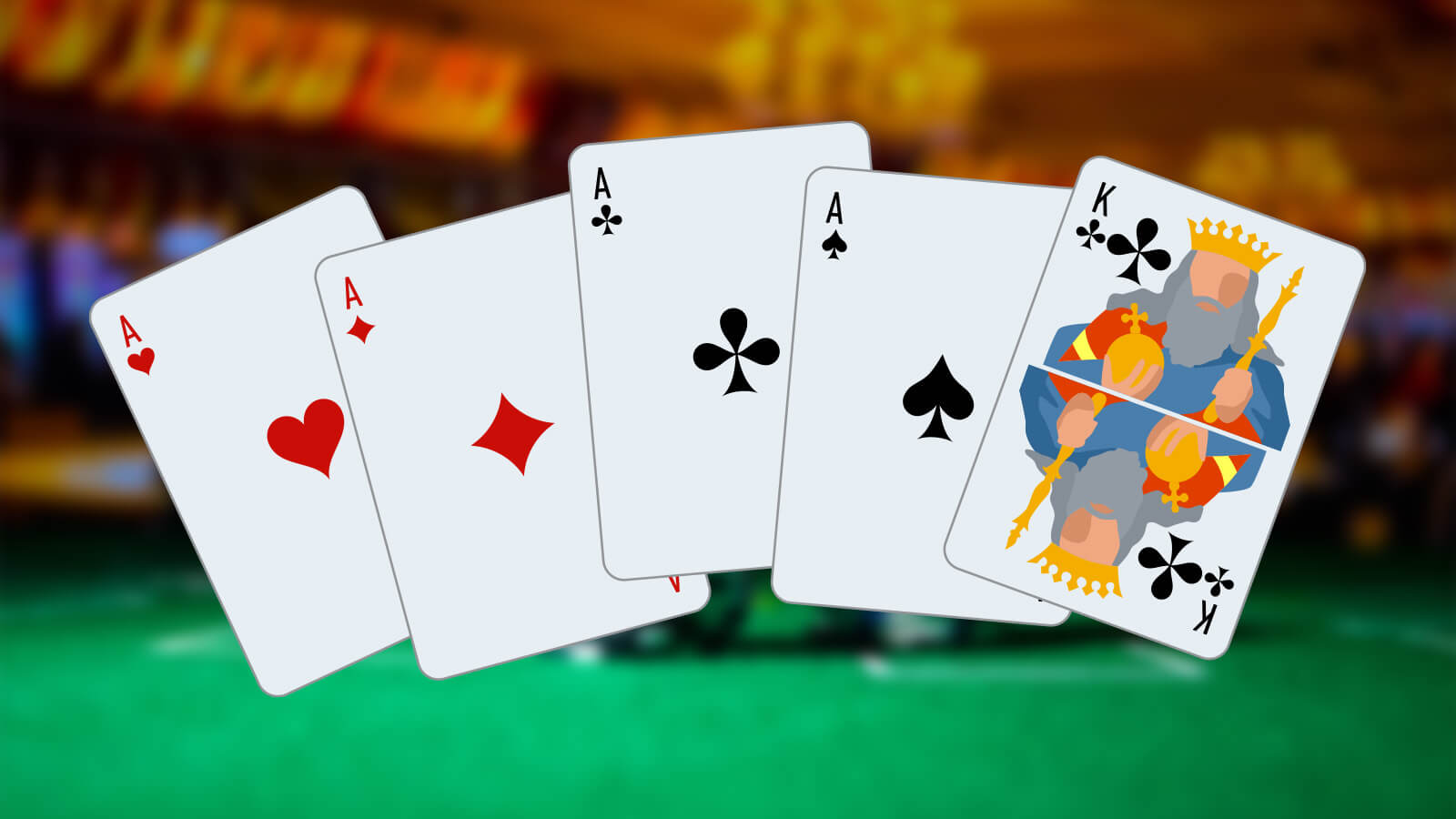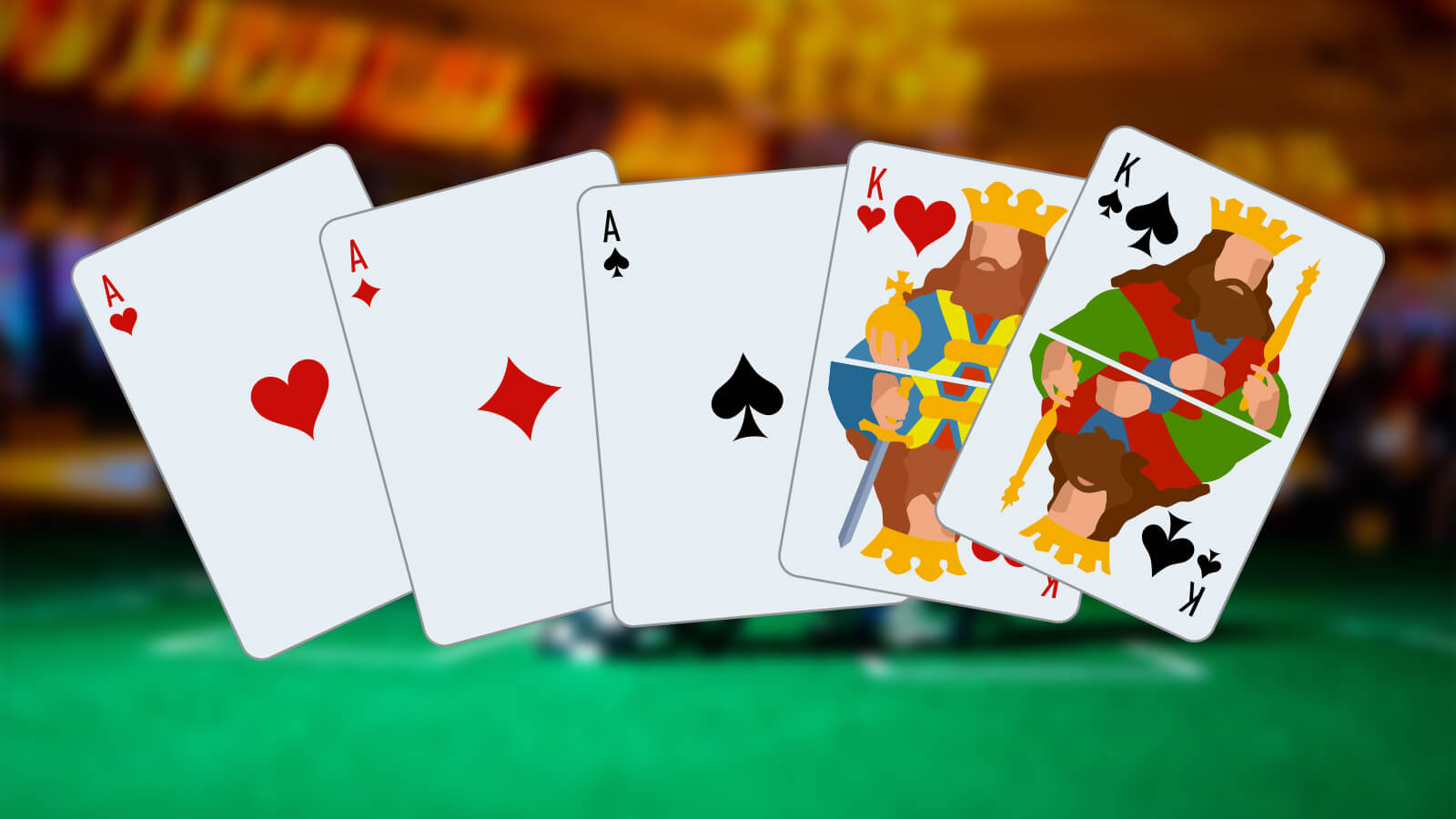Poker Hands: Elevate Your Game by Grasping the Essentials of Poker Techniques.

Understanding the intricate world of Poker hands can be a daunting task, but with proper instruction, anyone can succeed. Stay engaged for a full revelation of Poker's hidden strategies.
- How Do Poker Hands Work?
- Is the Royal Flush the most formidable hand in Poker?
- One Pair
- Two Pair
- Three-of-a-Kind Poker Hand
- Four-of-A-Kind Poker Hand
- High Card – A Weak Link in Poker
- The Full House: Your Lucky Ticket to Glory in the Game of Poker.
- 7 2 Poker Hand: Lucky or Not?
- Key ideas
- FAQ
How Do Poker Hands Work?
You've likely come across the term 'Poker hand' even if its meaning was not immediately clear to you.
The idea isn't complicated at all:
It describes the set of cards that are in your possession during the game.
Each playing card holds a specific rank, which helps to arrange potential card combinations, reflecting the strength of your hand.
What is poker hand strength?
To determine the strength of your hand, you should evaluate the number of superior hands, equal hands, and hands that rank lower than yours.
This method of assessment is called 'Hand Strength calculation' and serves as a guide for you on whether to fold or proceed with the call.
Up next, let's explore the different Poker hands and the specific cards necessary to form each one.
3-Card Hands in Poker
For those who don't fancy traditional Poker, there’s an alternative version to try.
The rules are easy: simply aim to have a better set of three cards compared to the dealer's hand.
This is how the game proceeds.
- To kick off, let’s start by making the opening bet! Every player participates by placing an initial wager.
- Subsequently, each participant receives three cards face-down, allowing them to decide whether to challenge the game or withdraw.
- Should you choose to play, prepare to add another bet, whereas folding will mean forfeiting your initial wager.
- The ultimate contest arises when the dealer shows their cards—should they reveal a Queen or higher card, they pass; otherwise, you'll receive your Ante and Play bets back.
In this game variation, there's an optional wager offering a bonus reward. You stand to gain even if the dealer places all hands or does not meet qualifications. You only need to hold either a Three-of-a-Kind, Straight Flush, or a Straight.
Are you aspiring to hit a major payout in 3-Card Poker?
Your most promising hand is a mini-Royal Flush, comprised of AKQ. A noteworthy alternative is a Straight Flush.
Although these hands offer an excellent shot at significant victories, drawing a mini-Royal Flush presents staggering odds of 5,525 to 1.
So play with faith and fortune by your side!
5-Card Hands in Poker

Poker's archetypal variant, commonly known to all, is undeniably one of the globe's beloved games.
Moreover, different variations act as ideal starting points for novices.
Here's the foundational knowledge to get you going:
- To begin, ascertain the Ante's value and what's accepted for betting limits.
- Subsequently, each gamer is privy to five cards dealt face-down.
- Upon reviewing their hands, the betting phase kicks off, granting players the options to ‘Raise,’ ‘Fold,’ or ‘Call’.
- In the successive round, they may discard and swap up to three cards for brand-new picks.
- New betting action follows, culminating in a reveal where the player with the supreme hand, as dictated by Poker rankings, bags the prize.
Remember, these are merely Poker’s basic tenets, although limitless variations abound with additional rules.
Refer to accurate Poker manuals for an in-depth understanding of specific game strategies.
For example, top Canadian online casinos with promotions like no wagering bonuses and no deposit bonuses are perfect for helping you learn all about the game of Poker .
What commands the most impressive stature in classic Poker gameplay?
A Royal Flush or Straight Flush. The likelihood of these remarkable hands from a 52-card deck stands at a minuscule 0.000154% or odds of about 649,739:1.
For a Straight one, your odds stand at 72193: 1.
How’s that for a long shot?
7 Card Hands in Poker Games
Seeking more of an exhilarating challenge? Consider trying 7 Card Poker, a thrilling variant where seven cards are dealt—three face-down and four face-up to each participant.
Prepare yourself to showcase your Poker prowess and master the art!
- When initial bets are on the table, gameplay commences with two cards face-down and one face-up for every participant, known as ‘The Door.’
- This triggers the opening of a betting round where players can engage in Call, Fold, or Raise.
- Following this, four further dealings occur, with the dealer revealing the 4th, 5th, 6th, and 7th cards—the last, face-down, dubbed ‘The River.’
- Each card unveiling leads to additional betting rounds.
- At the final betting round's conclusion, participants reveal their held cards, and the player with the premium five-card hand seizes the pot.
Despite the odds for a Royal Flush in 7 Card Poker being notably low—merely 0.0032%—it's a path to achieving the same esteemed prize as in the 3 and 5-card draw games.
So, if luck guides your destiny, an eminent victory could be just a hand away!
Before venturing into famed Poker hands, remember the importance of responsible gambling. Protect yourself and those you care about by recognizing the signs of gambling addiction.
Is the Royal Flush the most formidable hand in Poker?
Out of all Poker hands, the Royal Flush remains unmatched. This combination comprises an Ace, King, Queen, Jack, and Ten of one suit.
Considering its rarity, your probability of obtaining it is a tiny 0.000154%. Correspondingly, odds pegged at 649,739 to 1 underscore how scarce it is.

The infrequency of achieving it stems from its formation—some permutations require all cards within a single suit, which significantly reduces frequency across the four suits.
Typically seen once every 40,000 draws, its allure in Texas Hold ‘em is pronounced.
Why does that happen?
This is because you need to form the Royal Flush from two personal and three community cards in Texas Hold ‘em.
Straight Flush
A Straight Flush stands as a formidable contender in Poker, surpassed only by the majestic Royal Flush.
Characterized by a series of five cards from the same suit, it’s key to a substantial win regardless of the sequence created.
Consider a Royal Flush as the ultimate Straight Flush, with 5-4-3-2-A carrying the least weight. Ultimately, a Royal flush prevails over other Straight Flushes. For advanced knowledge, observe top-tier Poker players' strategies and enhance your own Poker skills swiftly.
Straight flush facts:
- Obtaining a Straight Flush is more probable than acquiring the game's highest hand.
- With four suits in play, a conventional deck harbors 36 straight flushes.
- As such, the odds of obtaining one are 0.0014% with 72,193 to 1.
One Pair
The excitement of being dealt a One Pair in Poker is truly captivating.
Two cards of the same rank along with three miscellaneous cards can unexpectedly turn the tide.
This hand surpasses merely having a High Card, but it ranks below most other hands.

Identifying a One Pair involves spotting two cards among the five that share the same rank or value.
For instance, holding two Aces, combined with a seven, three, and a Jack makes up a One Pair hand, attributed to the Aces.
Forming a One Pair is relatively common, with a staggering 50% probability.
The odds decrease significantly when aiming for a specific pair.
Although this hand carries a high likelihood, its standing is generally among the weakest. Hence, it’s wise to avoid overspending when holding a One Pair.
You may want to determine if your opponents possess only a High Card before placing confidence in a One Pair hand.
Two Pair
In Poker, crafting a Two Pair involves two cards sharing one rank (like both being Tens) and another separate pairing of the same rank (such as two Queens).
This hand ranks higher than a One Pair but remains below a Three-of-a-Kind.

The Two Pair can command an assertive play style in Poker forms like Texas Hold ’em and Omaha, especially when it involves two high-ranking pairs.
While it's rare to get a Four-of-a-Kind, having a Two Pair is more common, making players opt to play Two Pairs aggressively, especially if they are high-ranking.
In games such as Texas Hold ’em and Omaha, it's critical to examine the cards on the table to ensure there isn't a chance for a Straight, Flush, or Full House before confidently raising with Two Pairs.
Interestingly, the Two Pair is frequently beaten in Texas Hold ’em, presenting a challenge to players.
This occurs because when several players achieve two pairs, the player with the most superior pairing dominates the outcome.
Thus, having a commanding hand is fundamental to succeeding.
Three-of-a-Kind Poker Hand
The Three-of-a-Kind hand suits its name well, as it consists of three identically ranked cards.
When you draw three cards of the same rank, it's like hitting gold – you've scored a Three-of-a-Kind!
Aiming higher than Two Pairs, Three-of-a-Kind loses only to a Straight and above.

If multiple players boast the same Three-of-a-Kind, the player with the highest-ranked triplets claims victory, with Aces leading the pack.
As with a Two Pair, some players bet aggressively on their Three-of-a-Kind, especially in the game's later stages.
A Three-of-a-Kind is less common than a Two Pair, showing up in merely 2.11% of hands.
In international tournaments, you might not hear the term “Three-of-a-Kind” often, as commentators describe such hands by the rank of the cards.
For example, a set of Kings is simply referred to as “Kings,” while a trio of Twos is known as “Trips.”
Four-of-A-Kind Poker Hand
A Four-of-a-Kind features four cards of an identical value, such as all Aces or Sevens.
It’s a formidable hand ranking just below a Straight Flush and above Three-of-a-Kind.

The notable power this hand holds causes players to play it assertively, often betting heavily or raising multiple times.
When holding a Four-of-a-Kind, remain wary of combinations like Straight Flush or Full House that other players might be forming.
An intriguing nickname for this hand is “Quads,” distinguishing it from other four-card hands.
This nickname not only highlights its ranking but also marks it as one of Poker's highest-value hands.
Among Poker hands, the High Card is the weakest, usually relied upon only to resolve ties when no other hand is made.
High Card – A Weak Link in Poker
Similar to a Two Pair, success with a High Card is rank-dependent, so an Ace holds more strength than a Jack.
Most players adopt a more passive approach with the High Card, particularly in the early stages of the game.
Although a High Card seems weak, it’s possible to transform your hand into Two Pairs or a Three-of-a-Kind with some patience.
Sometimes called “No Pair,” the High Card hand lacks any notable combos but is frequently encountered in Poker, occurring over half the time.

Despite being the weakest hand, the High Card holds merit when it’s unlikely others will surpass it.
Possessing a Three-of-a-Kind alongside another pair results in what's known as a Full House.
The Full House: Your Lucky Ticket to Glory in the Game of Poker.
A Full House scores higher than Three-of-a-Kind and Straight, but falls short of Four-of-a-Kind, Straight Flush, and Royal Flush.
Seen as a powerful hand, the Full House often leads players to claim victories and scoop up the pots.
Full House Poker hand facts
Players leverage betting and raising strategies with a Full House to boost both the pot and win likelihood.
Considered a 'Golden Lottery Ticket' in Poker, a Full House majorly influences game outcomes.

In head-to-head Full House scenarios, the winner is the player with the highest-ranking three-card set.
This hand is rare yet esteemed, appearing with a mere 0.00144% probability.
The 7-2 combination is notorious for its weakness in Poker.
7 2 Poker Hand: Lucky or Not?
As reiterated, the order and connection of cards are crucial to hand strength.
The 7-2 hand struggles due to its unlikelihood of forming solid pairs or sequences.
Nevertheless, with strategic bluffing, a 7-2 hand can be played to your advantage, potentially even seizing the pot.

Beyond bluffing, your table position can be pivotal. For example, being last can guide your decisions based on others' actions.
Don’t forget the hierarchy of crucial Poker hands.
Identifying your Poker variant is key to understanding applicable rules.
Key ideas
- In games with several Two Pair holders, the order of strength dictates outcomes; having the top pair is advantageous.
- To bluff effectively, gather as much intel on rivals' hands.
- Set clear expectations before starting each game; know that facing skilled opponents demands peak performance.
- Regulating expenses is crucial; budgeting beforehand helps maintain control.
- Enjoy free online video poker without downloads.
- The ten best Poker hands range from One Pair to Royal Flush, encompassing Hands like High Card and Four-of-a-Kind.
- Try out Among Poker ranks, a Flush triumphs over a Straight. to get to know the game.
FAQ
What are the top 10 poker hands?
No hand surpasses the Royal Flush, Poker’s pinnacle.
Does a flush beat straight?
The Easter 2025 Airport Risk Index examines Canada’s traveler-friendly and challenging airport experiences.
What is the strongest hand in poker?
A breakdown of US Guinness consumption by state on St. Patrick’s Day.